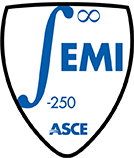Turning Weakness to Strength
Massachusetts Institute of Technology
Problems
Proteins-universally composed of long chains of only ≈20 unique amino acids that fold into complex molecular structures-are the main building blocks of life and realize a diversity of functional properties such as structural support, locomotion, energy and material transport, many of them simultaneously, to yield multifunctional and mutable materials. Despite this apparent functional complexity, the structural design of biological materials is often simple and has developed under extreme evolutionary pressures to facilitate a species' survival in adverse environments. As a result, these materials are typically created with low energy consumption, under simple processing conditions, and are exquisite as they often form from abundant repeating material constituents. Notably, these abundant material constituents themselves commonly represent functionally inferior material building blocks that are extremely weak, such as Hbonding. Yet, materials such as silk, collagen or cellular intermediate filaments are highly functional, and some are stronger than steel. This poses the elementary problem of how functional material properties are achieved in biology. Our work specifically aims at identifying generic principles that link the fundamental chemical (i.e., genetic) to meso- and macroscales.
Approach
In order to provide a bottom-up description of materials, we apply a hierarchical multi-scale simulation approach that considers the structure process-property paradigm of materials science and the architecture of biological materials at all levels, starting from the atomistic (chemistry, molecules) bridging to the overall structural (material, tissue, spider web) scales. This methodology, combined with and validated by multiscale experiments, enables us to answer fundamental questions about biological and synthetic materials under physiological (i.e. functional) and extreme (e.g. disease, injury) conditions, focused on mechanisms at the mesoscale (nm-m). Through comparative studies we systematically analyze a range of natural and synthetic materials. Since we describe materials based on their chemical makeup we can directly study different materials with identical models and thereby discover the interplay of universality and diversity of materials in biology.
Findings
Our work elucidated how Nature perpetually uses a limited number of elements to create functionally diverse materials and structures, despite the inferiority of universal building blocks. For example, our work has explained the impressive strength and toughness of silk, despite weak elements in the material's makeup (i.e., H-bonds). We discovered that the intrinsic weakness of H-bonds vanishes when they are grouped into small clusters of ≈4 H-bonds, which allows them to work cooperatively-akin to a flock of birds-and thus reach heightened strength. Notably, the weakness of H-bonds is actually critical for their capacity to provide strength in groups, since the self-organization of H-bonds into mechanically effective clusters is only possible if each bond has sufficient capacity to fluctuate entropically. We demonstrated that this design principle is found widely in biology and realized in silk, muscle proteins and many other materials. In silk, for example, highly confined ultra-small protein crystals that contain several stacks of clusters of H-bonds facilitate the material's extreme strength and toughness, explaining experimental results.
Impact
By focusing on the link between the atomistic and the meso- and macroscale, our work impacts the field in three major ways: (i) Understanding, interpreting and predicting experimental phenomena, (ii) Demonstrating how disparate material scales can be integrated in order to form the next generation green, low-energy or bioinspired materials with novel properties (e.g. mutability), and (iii) Understanding the mechanisms of injury and disease by probing how structural changes (e.g. genetic mutations & other defects) alter material properties, by providing a materials science foundation to disease mechanisms (e.g. brittle bone disease). Our work provides quantitative models of the interface between the built and natural environment.
Core competencies
- Computational materials science of biological, natural and synthetic materials (materiomics); multiscale modeling
- Deformation & failure in the context of physiological and disease conditions
- Collagen (tendon, bone), silk, amyloids, intermediate filaments & synthetic polymer nanomaterials; mutability & tunability
- Bioinspired and biomimetic materials
Current research team members
- Markus J. Buehler (PI)
- Zhao Qin (Ph.D. student)
- Dipanjan Sen (Ph.D. student)
- Steven W. Cranford (Ph.D. student)
- Graham Bratzel (Ph.D. student)
- Andre Garcia (Ph.D. student)
- Shu-Wei Chang (Ph.D. student)
- Nina Chou (Ph.D. student)
- Raffaella Paparcone (postdoc)
- Melis Arslan (postdoc)
- Alfonso Gautieri (postdoc)
- Amanda Valentine (undergraduate)
- Matthew Pires (undergraduate)
- Anna Tarakanova (undergraduate)
- Ibrahim Mohedas (undergraduate)
- Co-advised students: Rouzbeh Shahsaviri, Davoud Ebrahimi, Denvid Lau, Gene Cook
Recent graduates and co-workers
- Sinan Keten (Ph.D. 2010), Assistant Professor at Northwestern University
- Zhiping Xu (postdoc, 2010), Associate Professor at Tsinghua University
- Theodor Ackbarow (Ph.D. 2010), McKinsey & Co.
Current research collaborators (selection)
- Horacio Espinosa (Northwestern University), Biologically inspired fiber materials
- Roberto Ballarini (UMN) and Steven Eppell (Case Western), Collagen micro-nanomechanics Alberto Redaelli (Politecnico Milano), Molecular mechanics of collagen
- Laurent Kreplak (Dalhousie University, Canada), Intermediate filament mechanics
- Nicola Pugno (Politecnico Torino), Hierarchical mechanics of materials and structures


